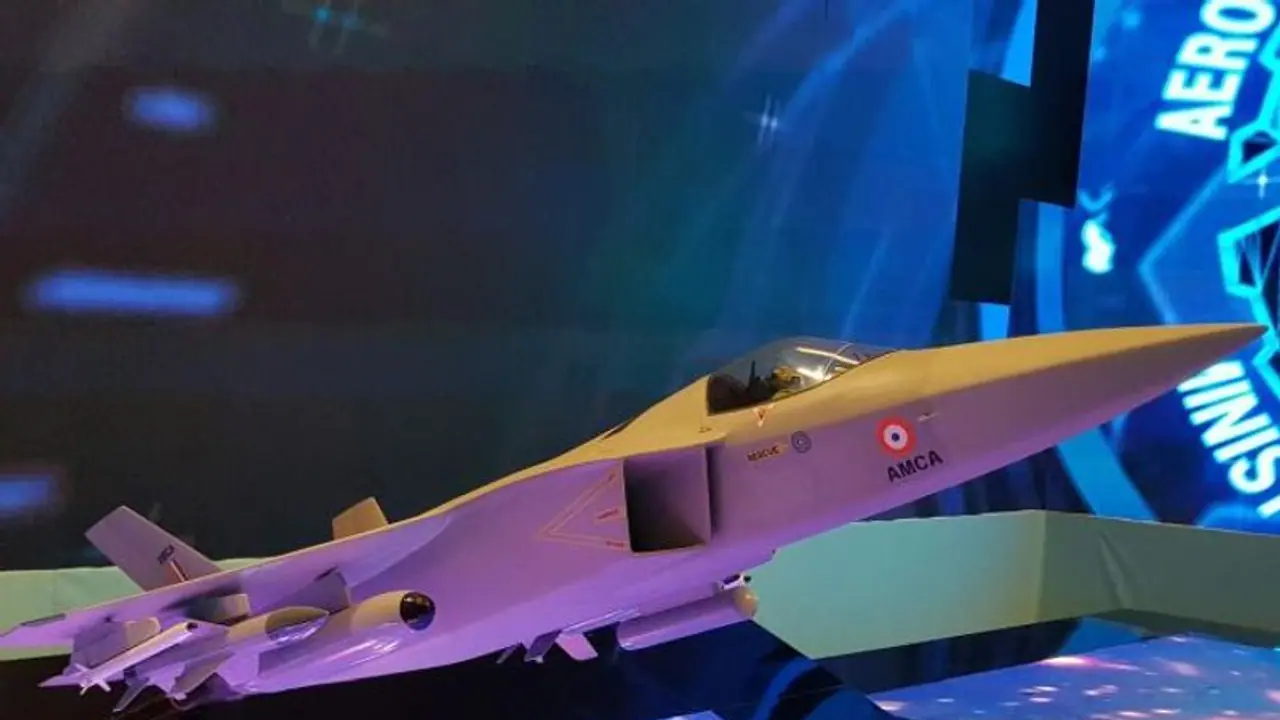The AMCA, envisaged as a 25-ton, dual-engine stealth aircraft with 360-degree situational awareness, will feature cutting-edge technology including a low-radar signature and the innovative Diverterless Supersonic Intake. Girish Linganna reports
Defence sources have revealed that the Cabinet Committee on Security (CCS) has sanctioned the initiative for the design and creation of India's fifth-generation combat aircraft, the Advanced Medium Combat Aircraft (AMCA), to be executed by the Defence Research and Development Organization (DRDO) at a cost of Rs 15,000 crore. The AMCA is projected as a 25-ton, dual-engine stealth aircraft with 360-degree situational awareness.

Explained: All about AMCA, India's fifth-generation fighter jet
It will have a low-radar signature, featuring an internal weapons bay and the first-ever Diverterless Supersonic Intake developed in India. The Diverterless Supersonic Intake is a new, simpler way for fighter jets to take in air at very high speeds without needing complicated parts. Developed in India, it will make the jet stealthier, lighter, and easier to maintain.
It is envisioned to internally carry a payload of 1,500 kg and an external payload of 5,500 kg, along with 6,500 kg of internal fuel.
Earlier, Aeronautical Development Agency (ADA) officials mentioned that following the approval of the project, the prototype could be unveiled within three years, with the inaugural flight expected to occur between one and one-and-a-half years subsequently. Hindustan Aeronautics Limited (HAL), the designated manufacturer for the project, has already commenced work on the AMCA. The initiative involves HAL building as many as five AMCA prototypes, with the first expected to be completed by 2026.
The AMCA initiative represents a significant step in India's defence enhancement plans, becoming the third Indian fighter jet endeavour after the Tejas Mk1A and the ongoing MkII projects. Through the AMCA, India aims to strengthen its position in the field of sophisticated combat aircraft, aiming to lessen its reliance on overseas acquisitions and boost its strategic independence.
The AMCA project is set to unfold in two stages: the first variant, MK1, will be powered by the General Electric F414 engine (From the US), boasting a thrust of 98 KN, while the second variant, MK2, aims for a more potent engine. This model is designed to offer improved features, notably through the adoption of a new engine in the 110-120kN range, which allows the aircraft to reach supersonic cruising speeds. This advanced engine is intended to be jointly developed with France's Safran,(and DRDO) with negotiations currently in progress.
The Indian Air Force (IAF) has pledged to purchase 40 units of the AMCA MKI, reinforcing its trust in the domestic defence infrastructure. The development of the AMCA will position India within an exclusive circle of countries that have produced a fifth-generation fighter jet, a feat previously achieved only by the United States, Russia, and China.
